

If you spend a lot of time in your garden, the odds are that you have seen small circuitous trails running through the leaves of your favorite plants. Though these designs have a nice look to them, they can actually be a big issue. These twirly trails are caused by the larval stage of a group of insects called leaf miners. If you want to keep your plants as healthy as possible, then you need to know how to get rid of leaf miners. Otherwise, your plants might not make it through the growing season.
Leaf miners are the larval stage in the development of thousands of different insects. This includes different flies and moths. These insects will lay their eggs on a variety of different plants depending on the insects’ preferences, which then hatch into these little mining worms. They then eat their way in between the cell wall of the leaf where they hatched, leaving white twisty trails in their wake. This can be disastrous for younger plants or unhealthy ones, as they need their leaves to be in tip-top condition to keep the plant growing correctly. As such, any gardener that wants to keep their plants as healthy as possible needs to get rid of the infestation as quickly as possible so that their plants stay healthy.
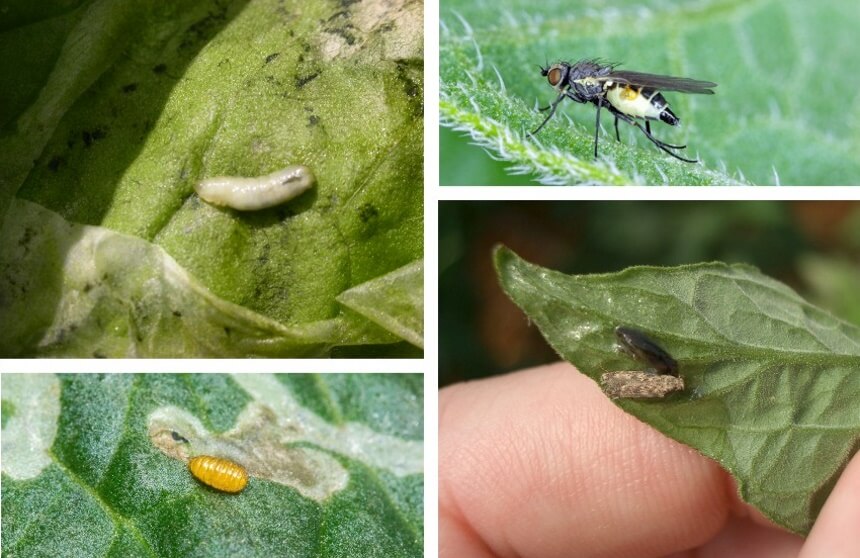
As we mentioned above, there are literally thousands of different critters that fall under the leaf miner category. While a trained entomologist Trusted Source Leaf Miners Damage Larvae mine their way through leaves creating blisters that often look like meandering tunnels. In spinach and chard affected leaves are not marketable. extension.psu.edu might feel the need to know each and every one of them, you can probably get by with the most common leaf miners that you are likely to see in your garden. These include the following:
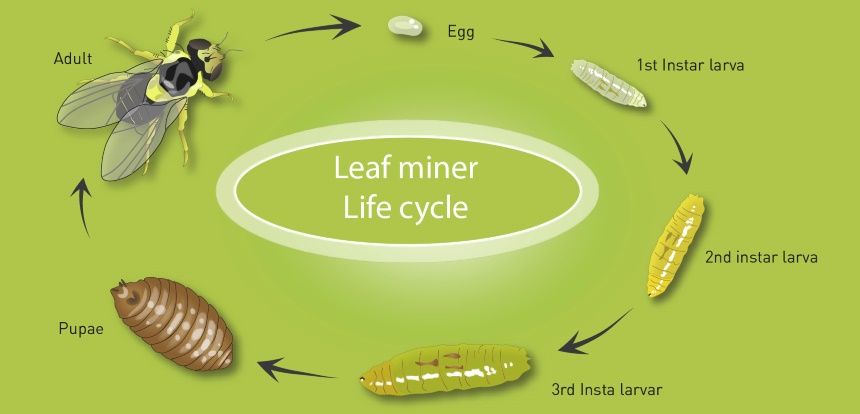
As with many insects, leaf miners begin their lifecycle as an egg. Depending on the species that you are seeing in your garden, the female will either lay her eggs on or in the leaves of the specie’s preferred plant. If the eggs are laid on the inside of the leaf, then there might be a small hard bump on the underside of the leaf. This is usually done in the early spring. Each female can lay up to 250 eggs in one batch.
Once the eggs have been laid, they usually take about 10 days to hatch. This time can be increased or decreased depending on the weather. If the sun is a bit warmer, then the eggs will hatch into larva in as few as 8 days. Once the larva has reached maturity, it will eat through the leaf’s cell wall and fall to the ground. From there, the larva will dig down into the soil near the plant for the next phase of development, which is called the pupa stage. In warm weather, this stage will only last for 15 days or so. After this time, the leaf miner will emerge from the soil as an adult and begin the entire cycle all over again. In colder weather, they will enter dormancy and basically hibernate in the soil until the spring thaw.
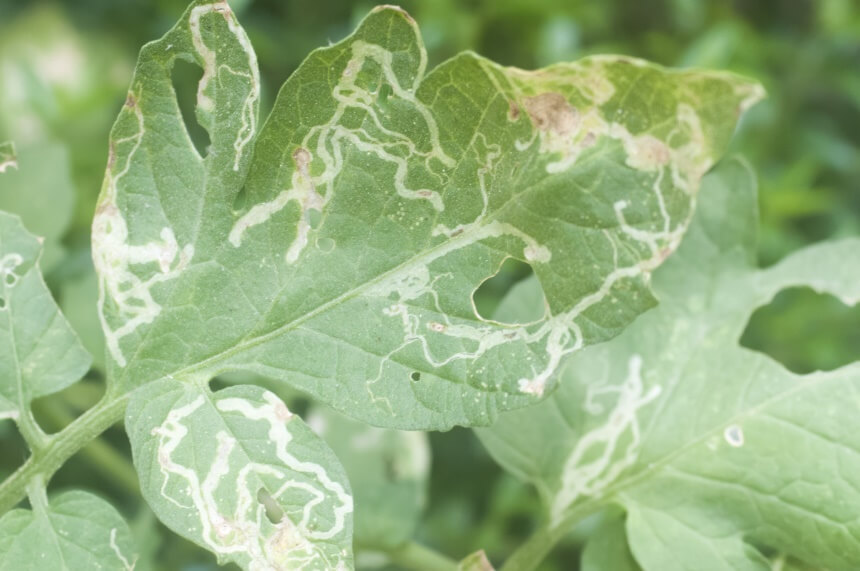
For most gardeners, the very first sign of leaf miner activity is going to be browning or dead leaves. This, of course, could mean a variety of ailments have befallen the plants and a closer inspection is usually warranted. By taking a closer look at both the underside and top of the leaves in question, you can quickly ascertain whether or not the problem is caused by leaf miners.
If the issue is indeed a leaf miner, then you will quickly find the tell-tale trails that these insects are so famous for. As we have mentioned above, these insects are likely to be found in a wider array of plants, but some plants are especially susceptible to their destructive feasting. For anyone that is growing these types of plants, it behooves them to be on the lookout for this type of damage. While most leaf miners are not capable of killing a plant outright, they could have a deleterious effect on how much fruit or vegetables the plants can produce. After all, the tissue that these insects eat will not grow back, which is never good for a plant’s health.
Since these insects can harm a plant’s crop yield and natural beauty or even cause the plant to die, it is good to have a plan in place to get rid of them. There are several different methods that you can employ, which, depending on the timing and type of plant you have, are highly effective at removing leaf miners completely or at least limiting their damage to your plants.
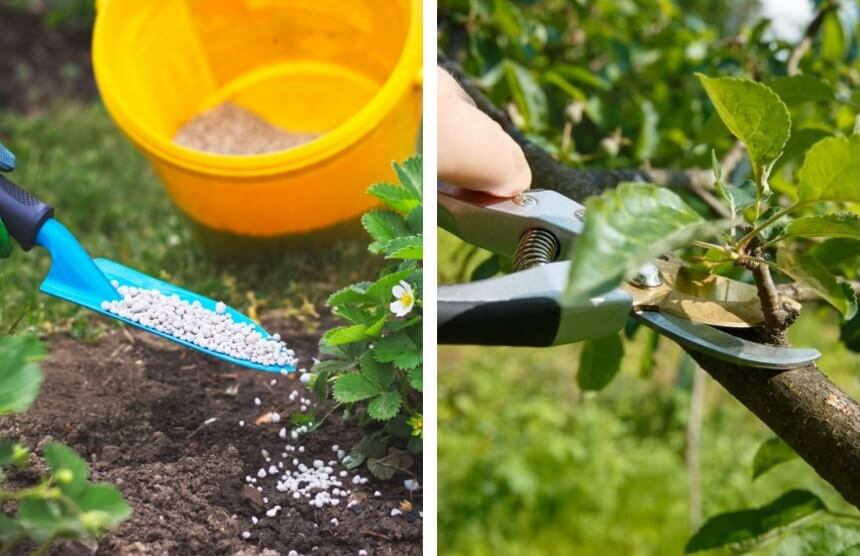
The first step that you should employ should you find any leaf mining activity in your garden is also the most effective at keeping the critters at bay. It is also relatively easy to do, given that you have enough time to keep it up. Basically, once you see the trails left by a leaf mining larva, you need to find the end of the trail. Once this is located, you can squeeze this section of the leaf between your fingers, which should quickly and effectively squish the offending larva. If this is done correctly, it can stop the damage to your plants in its tracks. Of course, you can also take appropriate measures to ensure that your plants will be able to weather the storm of a leaf-miner infestation. This includes regularly fertilizing your plants, as well as making sure that they have the right amount and type of soil. You should also prune the plants so that they can be as healthy as possible. That way, they can quickly bounce back from any leaf miners that have feasted on their leaves.
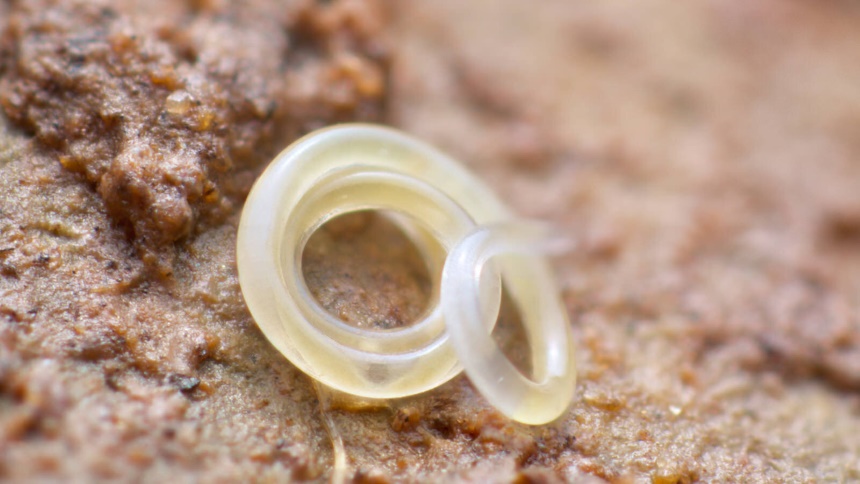
If you are unable to keep on top of the infestation of leaf miners on your own, then it might be appropriate to call in some backup. This would involve the purchase and introduction of beneficial insects to your garden. That way, these helpful insects will take care of the leaf miners for you so that you won’t need to take the time to inspect every leaf. This is an especially effective method if you have a larger garden that you cannot monitor closely each and every day of the growing season. If you are looking to go the biological route to deal with your leaf miners, there are two different beneficial creatures that you should look for. One is nematodes, which can be added to the soil. These creatures eat the pupa of leaf miners in the soil, which breaks the life cycle which should protect your plants.
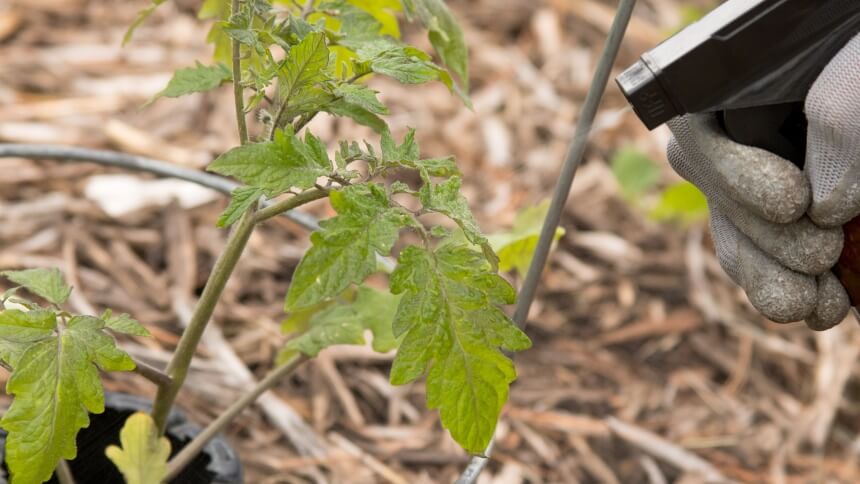
Of all the different methods for removing leaf miners, insecticides Trusted Source Leafminers / Tomato / Agriculture: Pest Management Guidelines / UC Statewide IPM Program (UC IPM) Leafminer adults are small, black and yellow flies. Liriomyza sativae is shiny black on the upper surface except for a prominent yellow triangle between the bases of the wings; the underside and the face between the eyes are yellow. www2.ipm.ucanr.edu should be your last resort. They are not terribly effective since most of them are only effective on leaf surfaces and leaf miners are usually within the leaf itself. These insecticides might also remove helpful insects that would eat the leaf miners as well, which is definitely not helpful.
As we mentioned before, there are several things that you can do to try to prevent leaf miners from destroying your plants. The first thing that you should do is, of course, make sure that your plants are as healthy as possible. Fertilize them regularly, aerate your soil, and keep the leaves neatly trimmed. This will keep the plants as healthy as possible, which will help them to fend off any invasion from leaf miners.
There are also several different prevention methods that you can utilize if you know that your particular plants are especially susceptible to leaf miners. If, for instance, you have citrus fruits that you are growing, you could get traps to pull the leaf miners away from plants to keep them as healthy as possible. That way, you will keep your plants healthy without having to do any of the removal techniques we listed above. Another option for preventing leaf miners and other damaging insects from getting at your plants would be to set sticky traps for them. This trap from Seabright is especially effective for lower-lying plants, while this option from Gingbau is a good choice for fruit-bearing trees.
Leaf miners can range from being a nuisance to downright destructive to your plants and garden. These small bugs wiggle their way into the leaf walls of plants and can inhibit the growth of fruits and vegetables. As such, you need to know how to get rid of leaf miners if you want to have a healthy garden. Though it is usually best to prevent them from ever getting into your plants in the first place, you do have some options to remove them. This can include doing it yourself by squishing them, introducing insects that eat them or spraying certain chemicals to limit their development. No matter which path you choose, we wish you the best of luck in your growing!